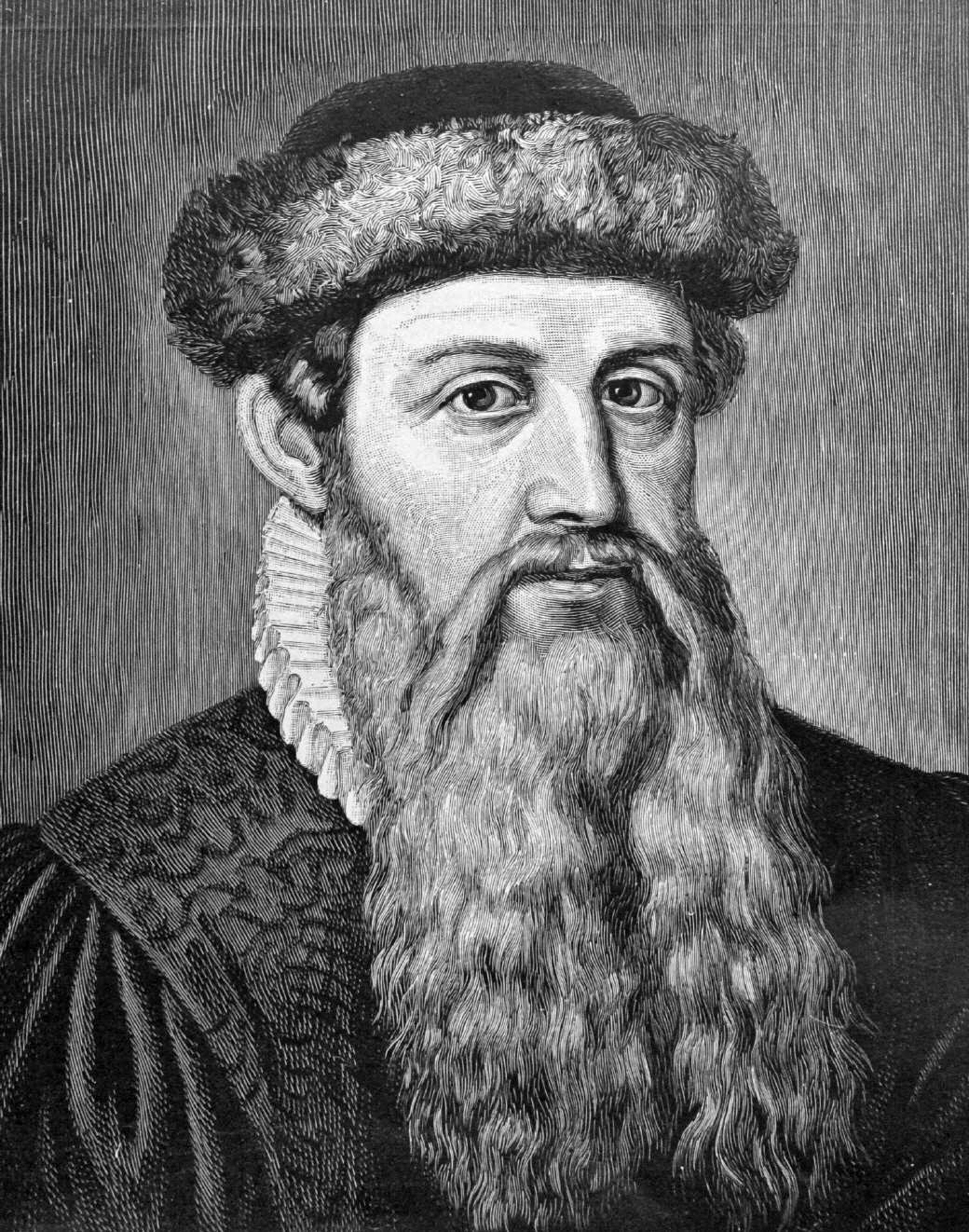book of the apostles.

Johannes Gensfleisch zur Laden zum Gutenberg was a German inventor and craftsman who introduced letterpress printing to Europe with his movable-type printing press. Though not the first of its kind, earlier designs were restricted to East Asia, and Gutenberg's version was the first to spread across the world. His work led to an information revolution and the unprecedented mass-spread of literature throughout Europe. It also had a direct impact on the development of the Renaissance, Reformation and humanist movement.
His many contributions to printing include the invention of a process for mass-producing movable type; the use of oil-based ink for printing books; adjustable molds; mechanical movable type; and the use of a wooden printing press similar to the agricultural screw presses of the period. Gutenberg's method for making type is traditionally considered to have included a type metal alloy and a hand mould for casting type. The alloy was a mixture of lead, tin, and antimony that melted at a relatively low temperature for faster and more economical casting, cast well, and created a durable type. His major work, the Gutenberg Bible, was the first printed version of the Bible and has been acclaimed for its high aesthetic and technical quality.


Master Gijsbrecht van Brederode was a Northern Dutch book illuminator who worked in Utrecht in the 3rd quarter of the 15th century.
The artist got his name from the book of hours, which he illuminated for Gijsbrecht van Brederode, dean of Utrecht Cathedral (died in 1475). It is known that between 1465 and 1470 this master created almost all the miniatures in this manuscript.


Giovanni Pietro Birago was an Italian painter, illuminator, and engraver for the Sforza court.
He worked from 1470 to 1513 in Brescia, Venice, and Milan, was a leading Milanese illustrator and was favored by the ducal court.




Johannes von Valkenburg was a Franciscan monk of the Friars Minor in Cologne, a calligrapher and illustrator.
He is known for having written, decorated and illustrated a manuscript for the Franciscan monastery in Cologne at the end of the 13th century and for having made two copies of it. One is in the Archdiocesan Diocesan and Cathedral Library in Cologne, the other in the University and State Library in Bonn. On the title pages of these rarities is an inscription indicating Valkenburg's authorship.











































































